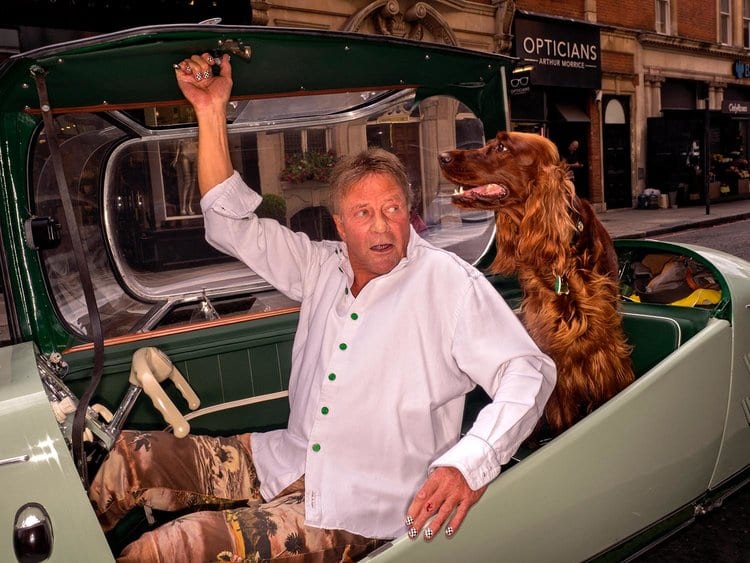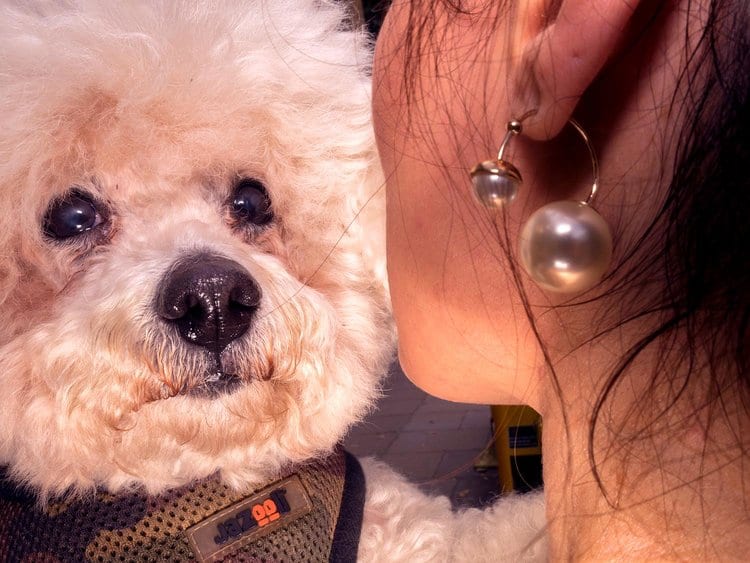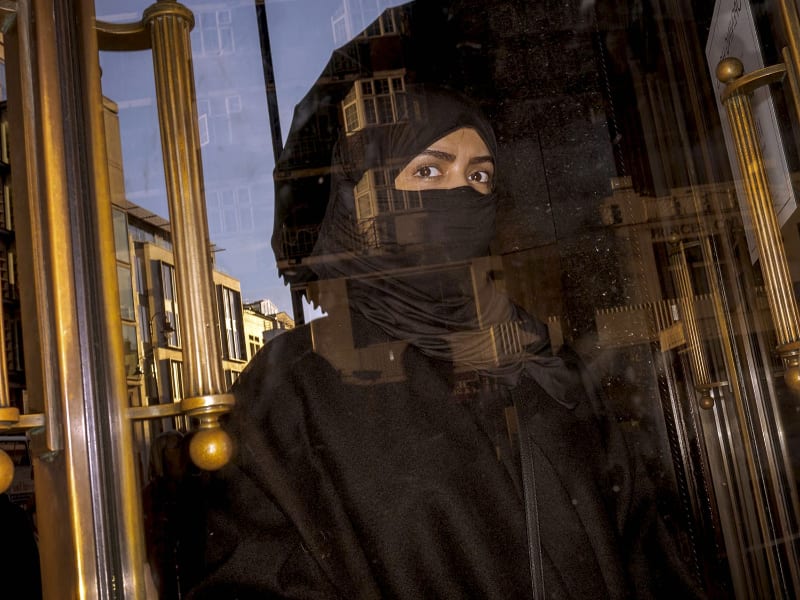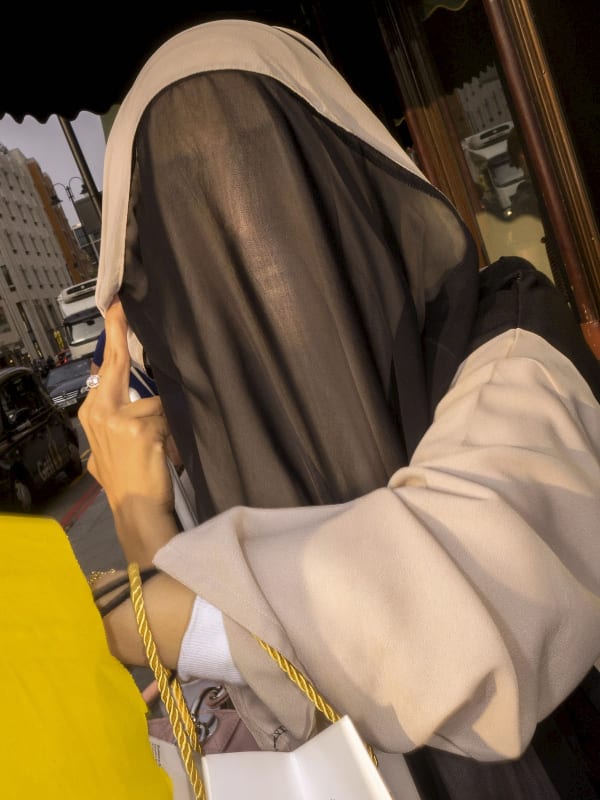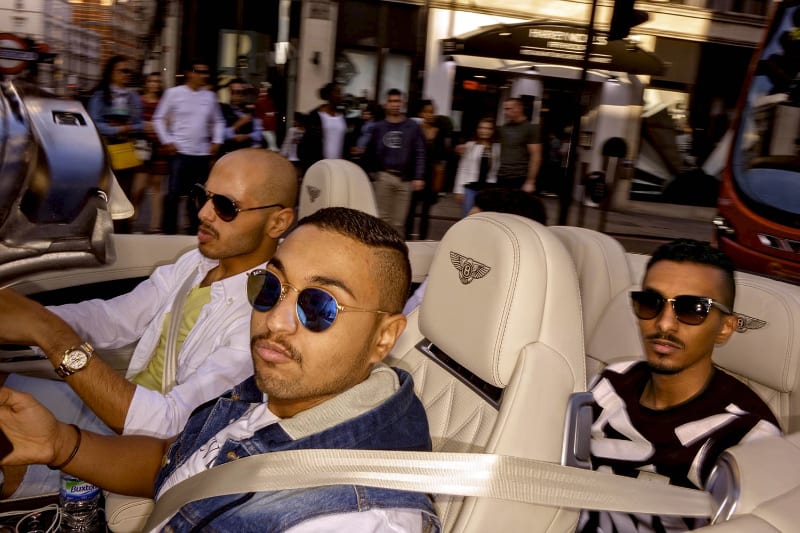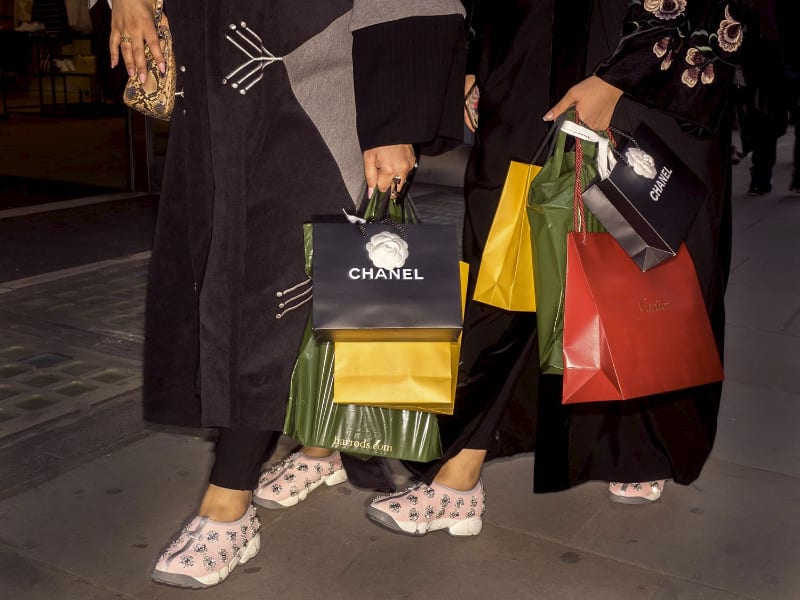“Disgusting”. “Perverted.” “The British Judiciary should hold him accountable for what he’s doing.” These are just a handful of reactions to Dougie Wallace’s new body of work: Harrodsburg. Lauded for his documentation of the puke-tinged hedonism of Blackpool in Stags, Hens & Bunnies, the “total fucking chaos” of Shoreditch Wild Life and the Mumbai cab driver portraits Road Wallah, Harrodsburg finds Wallace on the hunt for richer prey.
Wallace prowled the pavements of London’s richest post-codes, flash and camera primed, waiting for a suitable subject. When he spotted one, he approached, snapped a quick close-up and was gone, before they’d had time to process what had happened.
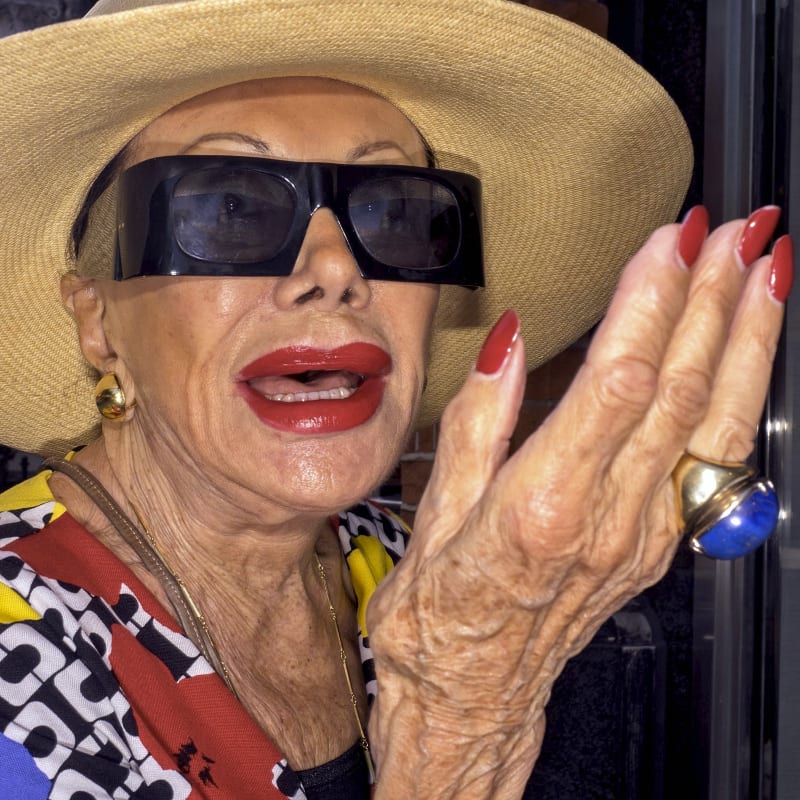
Neatly, the roots of Harrodsburg come from BJP, after its December 2014’s Cool and Noteworthy issue mentioned (incorrectly) that you might spot Dougie working outside Harrods. This germ of an idea dovetailed neatly with an existing project that contrasts the people of Knightsbridge, London, and Calton, Glasgow.
A resident of leafy Kensington can expect to live to their 80s, explains Wallace, whereas in the Calton area of Glasgow, near to where Wallace grew up and just a few minutes drive from the city centre, life expectancy is just 54 – the lowest in the UK. The results make for disturbing viewing, as the tanned, moisturised, Botoxed hides of the Kensington set contrast with the Glaswegians’ blown-out capillaries and baked-in frowns.
Both extremes of the economic spectrum shock, but there’s something especially eerie in the Kensington pictures. Narrowing his focus, Wallace decided to concentrate on the monied pedestrians around Harrods. This is a story, he says, of “glut, greed and the wealth gap playing out on the streets of a city which has seen a 400 per cent rise in demand for food banks in the last year”.
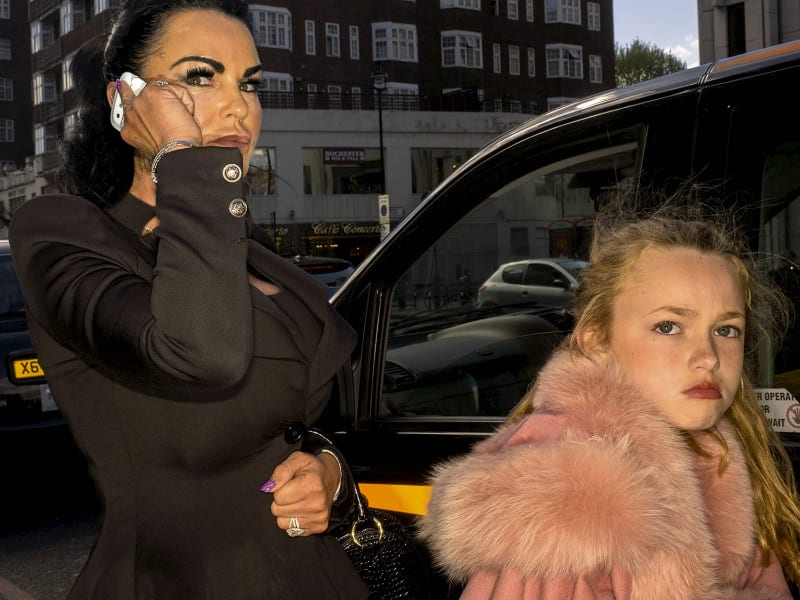
The result is a freakshow of privilege. Woman in £10,000 outfits and pancake makeup balefully gaze through the faces that have been heavily worked. Men who look like they’ve stepped out of Jeeves and Wooster brandish fistfuls of money. Hours of effort and piles of cash have been spent trying to look fashionable, but Wallace’s flash slices through this facade like a razorblade.
“It’s like a safari,” Dougie says. “I can spot the facelifts, the pumped-up lips, from the other side of the street. My hit ratio of someone with a bad facelift is one a day.”
As he pores through his work, he doesn’t mince his words: “She looks like an alien”, he says. “Look how stretched she is”, they’re covered in scratches.” Yet there’s also notes of kindness: “Ah,” he says, “they’re just old women – what would they look like without surgery?”
But these wealthy, inner city London aristos are a dying breed, their swanky avenues under assault from what’s been called ‘lights out London’. In 2015, the Evening Standard reported that 70 per cent of properties on Ashburn Place (near Gloucester Road) are not classed as a main home, lying empty as investment opportunities for the global megaelite. Bought less for housing and more for a safe investment, these Georgian three-story terraces lie semi-abandoned.
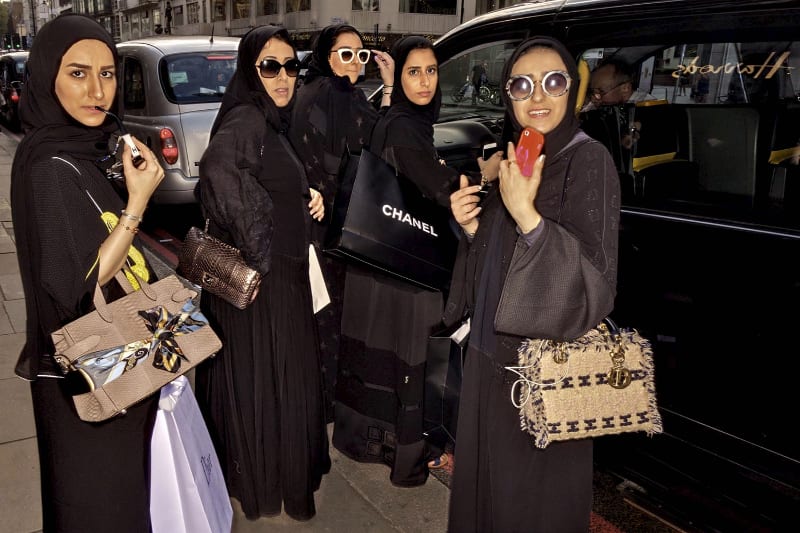
Those responsible are the petrochemical megarich, the Qataris, Emirates, Saudis and Russians that make up a distinctive second tribe in Dougie’s series. Anyone familiar with Knightsbridge will know the high-octane thrum of Bugattis, Lamborghinis and Ferraris. “They go round and round and round in circles, it’s like a Scalextric,” says Wallace.
The pictures have kicked up a stink in Qatar’s capital Doha. The Doha News ran a story on Harrodsburg which resulted in 425,000 unique visits to the online collection. The story linked to the hashtag #دوغي_والاس, where native commentators discuss ways to deal with Dougie’s presence.
They say, (via Google Translate): “No one has the right to photograph any person,” “May God curse him” and, perhaps most hurtfully for the man who calls himself ‘Glasweegee’, “English moron”.
This controversy resulted in a barrage of calls from CNN, ITV, the Wall Street Journal and London Tonight, all eager to have Wallace over to talk. He’s unrepentant about his methods. “They come here because the rule is they can do whatever they want,” he says. “Well, the rule of law says that I can photograph them.”
Wallace, as a result, is having to deal with newfound notoriety. “They come up and start Snapchatting with me now,” he says. “I’m just showing the wealthy, I’m taking pictures of them to highlight things like food banks in Glasgow.”
Whether you agree with his methods or not, Wallace is utterly sincere. The gap between the haves and have-nots has become a Grand Canyon-size chasm, and what use is art if it’s not confronting these inequalities? Aggressive, confrontational work like Harrodsburg righteously peels back the skin of an ultra-rich one per cent, who may as well live on a different planet to the rest of us.
This article was first published on 19 October 2015, and an edited version went on to be published in the February 2016 issue of BJP, which was themed Shooting the Rich – Documentary photographers turn the spotlight on the mega-wealthy.
